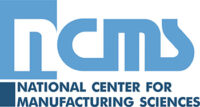CTMA Project #: 142103
Problem: As the commercial vehicle industry moves to more electric and hybrid electric vehicles, decreasing vehicle weight becomes more important. One way of reducing vehicle weight is to use lightweight composite materials, but these materials have challenges over traditional materials. In commercial automotive and commercial trucking industries, manufacturing of composite structure in an autoclave is often not viable due to slow production cycles, high energy usage, and high cost. Autoclave manufacturing is highly capital intensive, expensive to operate due to high energy costs and limits the size of candidate components. The process is labor intensive and entails slow cycle times that severely limit production volume. In addition, the growth of composites could outpace the available autoclave capacity.
Benefit: The completion of these tasks will serve as a road map for commercial industry to join thermoplastic materials, so they withstand the different lifetime stresses, ultimately reducing maintenance and sustainment costs for these vehicle hulls. The Army can utilize the lessons learned from this initiative to help reduce vehicle weight for other systems and equipment across the Army and other DOD organizations.
Solution/Approach: Using an Out of Autoclave (OOA) composite manufacturing methodology is an alternative to the traditional high-pressure autoclave curing process commonly used to manufacture composite materials. The OOA processing reduces cycle times and eliminates the expense of autoclave processing. This project will perform a technology assessment and evaluation on lightweight thermoplastic and thermoset composites to determine the relationship between composite laminate thickness, processing parameters, material properties, and performance. Army vehicle applications will be used to showcase efficient manufacturing processes of military ground vehicle structures, resulting in lightweight prototypes that are economical to produce.
Impact on Warfighter:
- Enhance vehicle mobility and readiness
- Reduce fuel use and emissions
- Decrease maintenance and sustainment costs
- Improve mission performance
DOD Participation:
- U.S. Army-Ground Vehicle Systems Center (GVSC)
Industry Participation:
- North Dakota State University
- NCMS
Benefit Area(s):
- Cost savings
- Maintenance avoidance and reliability
- Positive environmental impact
- Improved readiness
- Energy efficiency
- Reliability improvement
- Lightweighting
Focus Area:
- Energy, environmental, health, and safety




